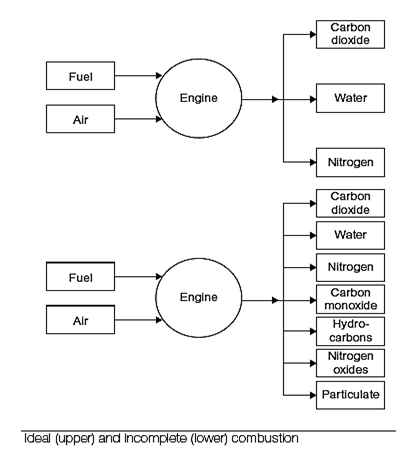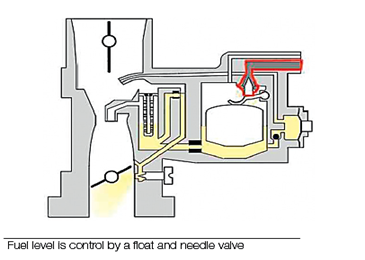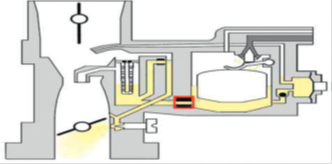SKEDSOFT
Introduction:
The introduction of fuel injection systems has made carburetors almost obsolete. Fuel systems have been extensively developed during the past fifty years. There were many developments in the traditional petrol supply and air mixing methods used in carburetors. Fuel injection is now fitted to all petrol engine vehicles to meet the latest requirements for performance and the reduction of harmful exhaust gas emissions.
Ideal (upper) and incomplete (lower) combustion: 
- Diesel fuel pumps and injectors have seen similar developments with the introduction of electronic control and common rail systems.
- All fuel delivery systems have to supply a quantity of fuel that matches the amount of oxygen that is in the air entering the engine.
- For petrol engine vehicles, the quantities of hydrogen and carbon in the fuel and the oxygen content of the air should be chemically correct to allow a complete chemical change during combustion.
- The chemical formula for clean combustion is

or hydrocarbon plus oxygen results in carbon dioxide and water.
- For complete and clean combustion, the ratio of air to fuel should be as close as possible to the stoichiometric value.
- This is where λ (lambda) equals one. This is a ratio of 14.7:1 by mass of air to fuel.
- In petrol engines, the optimum for clean combustion is for these quantities to be delivered accurately to each cylinder in the engine.
Petrol is ignited in the combustion chamber by a spark arcing across the electrode gap of a spark plug. Diesel fuel ignites following injection into the high-temperature air charge. The high temperature is obtained by compression of the air charge. The air charge on petrol engines is matched to the amount of fuel delivered. In diesel engines, a full air or gas charge is required to raise the temperature by compression.
NEEDLE VALVE: 
- The basic carburettor consists of the venturi, through which the air flows, and the float chamber, which holds a supply of petrol at a constant level in relation to the supply beak in the venturi.
- The level of petrol in the float chamber is maintained by a needle valve that is lifted onto its seat by the float so that it stops the flow when the chamber is full.
- As petrol is used the level drops, the needle valve opens and the flow of petrol into the chamber resumes. In this way, a constant petrol level is maintained.
Main jet in the fuel feed to the venturi 
- The main jet in the fuel feed to the venturi forms a restriction in the petrol flow and by virtue of its size acts as a metering device.
- The venturi is a tube with an inward curving restriction. Air flow through the venturi speeds up as it passes through the restriction.
- The effect of this is to reduce the air pressure at that point. Inside the float chamber, atmospheric pressure is applied to the top of the petrol held there.
- A vent in the top of the float chamber allows a free passage of air and atmospheric pressure.